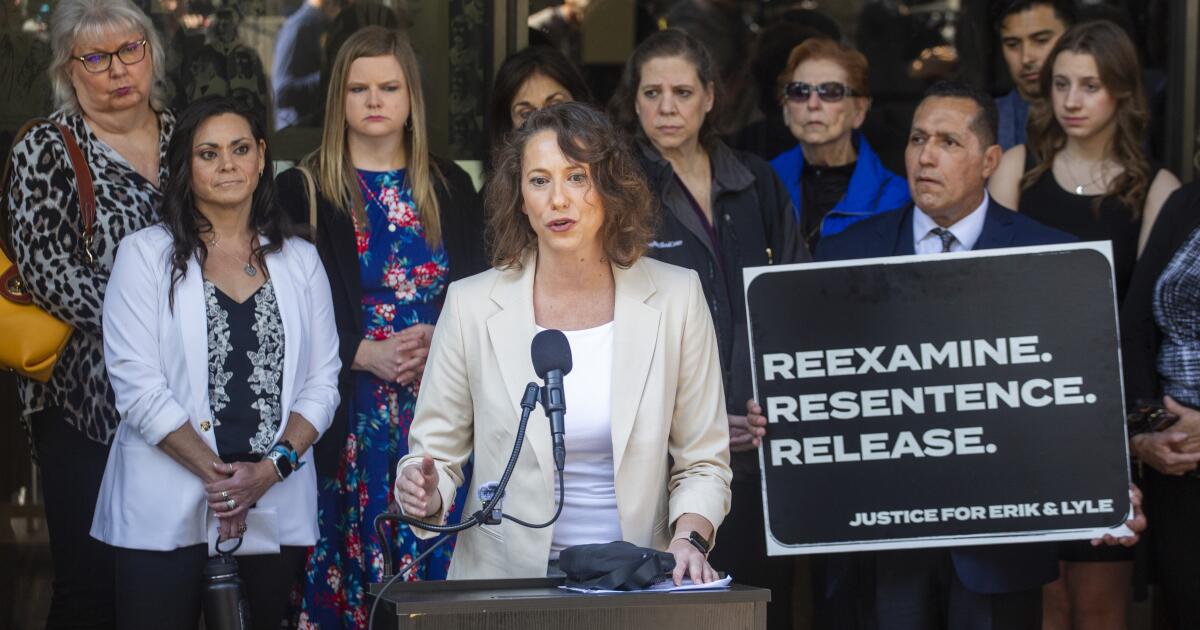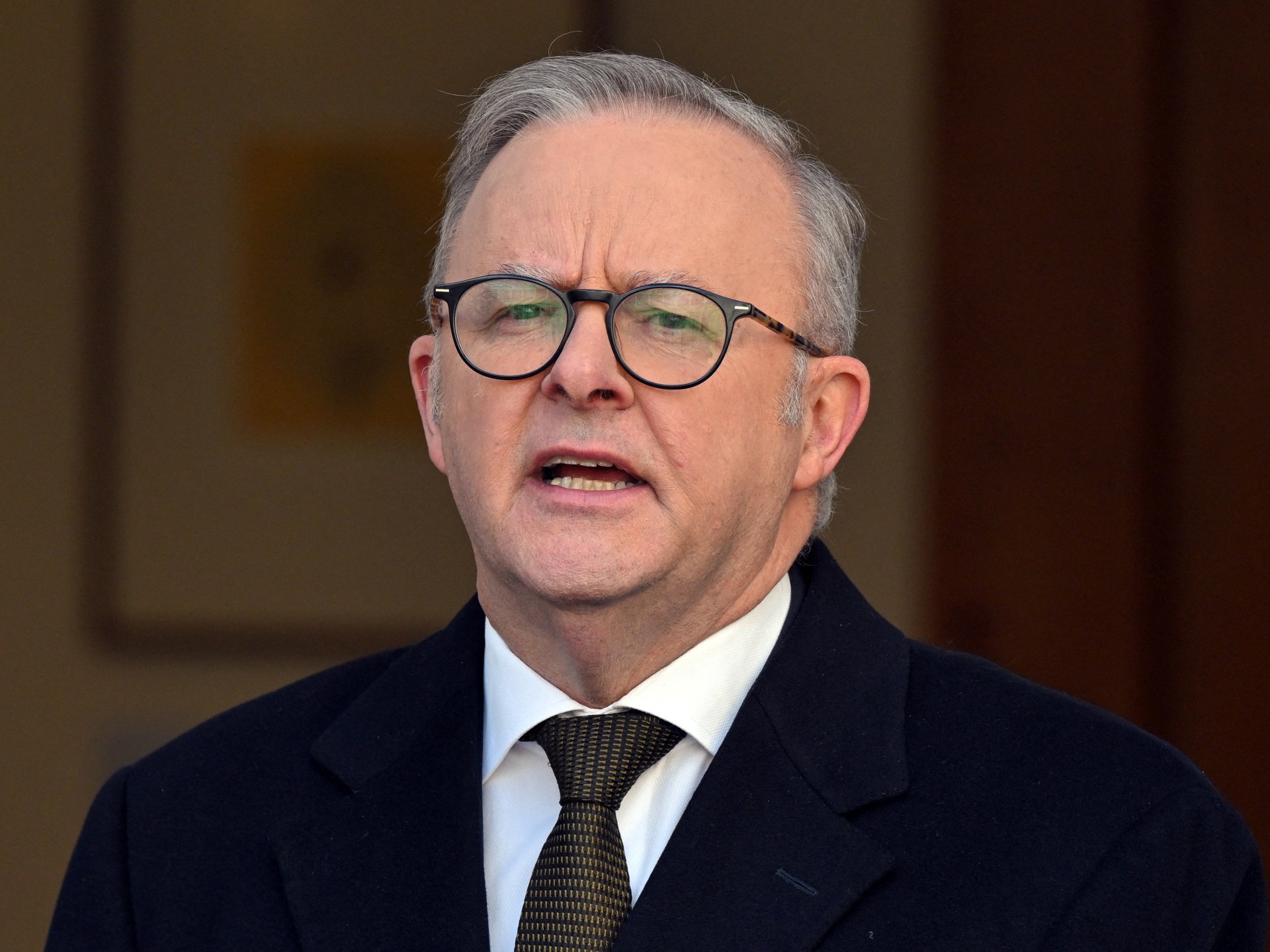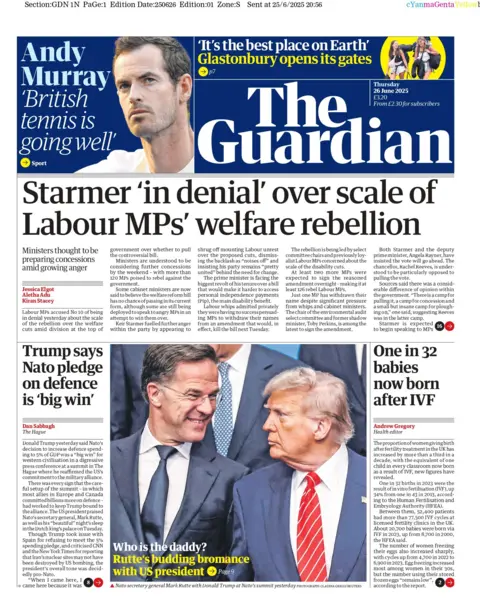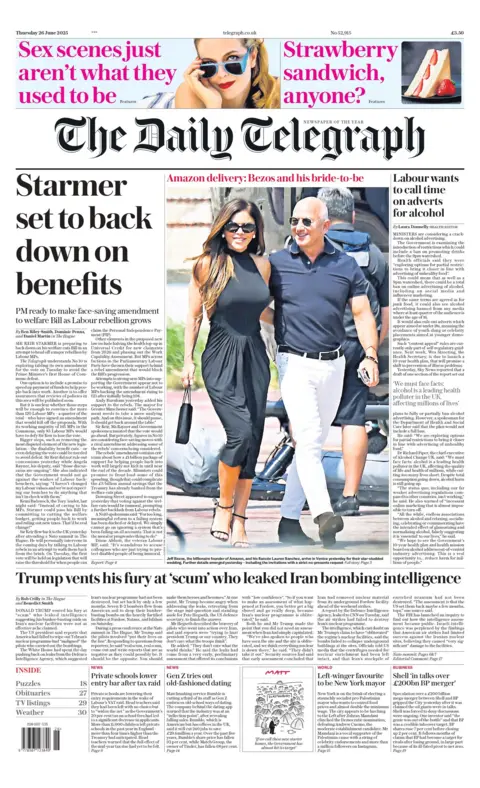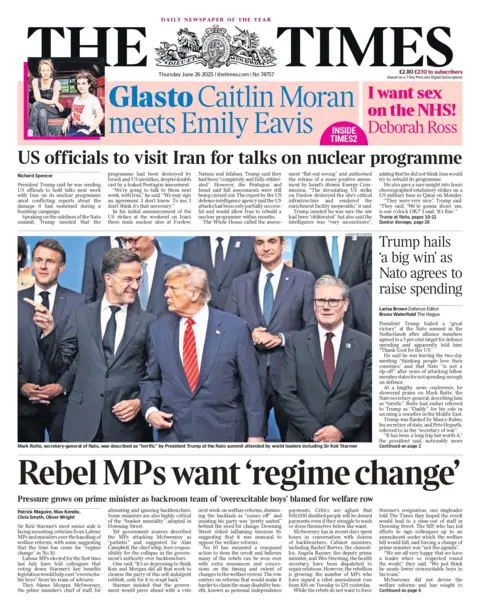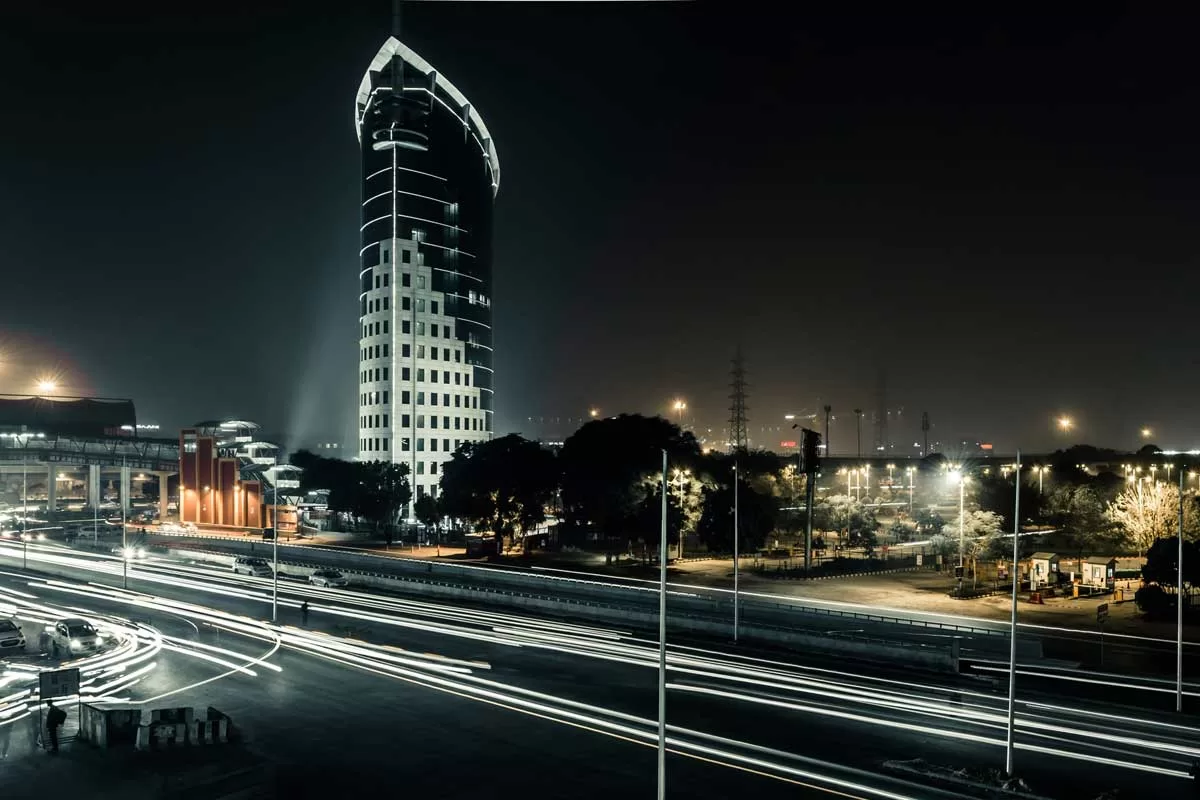Menendez family stunned by Erik parole denial; Lyle’s fate uncertain
State parole officials had not yet publicly announced that Erik Menendez would remain behind bars, but word of the outcome was already spreading among his family members early Thursday evening.
Stunned and angry at the decision, some relatives took to social media just as news broke that Menendez, 54, had been denied parole for the 1989 shotgun murders of his parents, a grisly crime committed with his older brother, Lyle.
“How is my dad a threat to society,” Talia Menendez, his stepdaughter, wrote on Instagram. “This has been torture to our family. How much longer???”
In the all-caps post, Menendez’s daughter castigated the parole board, calling them “money hungry media feeding pieces of trash” after the decision.
“You will not have peace until my dad is free!!!!” she wrote in a following post.
A hearing for Lyle, 57, began Friday morning, leaving family members who support his case clinging to hope his ruling will be different.
Originally sentenced to life without parole, the brothers eventually qualified for resentencing because they were under 26 years old at the time of the killings.
Several petitions and legal filings went nowhere for decades, but their case received renewed attention after the popular Netflix series “Monsters: The Lyle and Erik Menendez Story” sparked a social media interest in their case, and the sexual abuse the two siblings alleged was perpetuated by their father, Jose Menendez.
A superior court granted their resentencing petition in May, paving the way for the parole hearings this week.
More than a dozen relatives of the two brothers testified in favor of parole during the Thursday hearing for Erik Menendez, and were also expected to speak for Lyle as well.
After a nearly 10-hour hearing Thursday, Parole Commissioner Robert Barton commended the support Menendez received from his family.
“You’ve got a great support network,” he said Thursday before pointing to Erik Menendez’s repeated violation of prison rules by using a contraband cellphone. “But you didn’t go to them before you committed these murders. And you didn’t go to them before you used the cellphone.”
Erik’s wife, Tammi Menendez, blasted the decision.
“Parole Commissioner Robert Barton had his mind made up to deny Erik parole from the start!” she wrote on X. “This was a complete setup, and Erik never stood a chance!”
Anamaria Baralt, a Menendez cousin and the family spokesperson, tried to remain positive in a video posted on Instagram, noting he could re-apply for parole in three years.
“Erik was given the lowest possible denial time,” she said. “It’s disappointing. we are certainly disappointed as a family.”
However, she said she was proud of Menendez as he addressed the parole board for the first time, something the family did not view as a possibility a few years ago.
“We knew this was a steep climb,” she said in the video. “California is very rigorous in its standards. Not many people get out on parole on their first try. So it wasn’t entirely a surprise. But it is nonetheless very disappointing.”
According to the Prison Policy Initiative, a research and advocacy group that pushes for criminal justice reform, the vast majority of inmates who go before the board are denied parole.
A recent study of parole rates across the states by the Prison Policy Initiative found that 14% of parole hearings in 2022 resulted in approval.
“While we respect the decision, [Thursday’s] outcome was of course disappointing and not what we hoped for,” the Menendez family said in a statement. “But our belief in Erik remains unwavering and we know he will take the Board’s recommendation in stride. His remorse, growth, and the positive impact he’s had on others speak for themselves.”
Family, friends and cellmates have commended the two brothers for their work inside prison in the past few years, referring to them as “mentors” for other prisoners and spearheading programs inside prison walls.
Lyle Menendez spearheaded a beatification project at Richard J. Donovan Correctional Facility, and his brother has organized artwork for the project.
The two have started programs dealing with anger management, meditation, and assisting inmates in hospice care.
But Thursday‘s hearing also aired struggles and issues the younger sibling has faced during more than three decades in prison, including drug and alcohol use, fights with other inmates, instances of being found with contraband, and allegations he helped a prison gang in a tax fraud scheme in 2013.
Members of the parole board spent several minutes in particular asking about being caught multiple times with a cellphone, which he said he used to speak with his wife, watch YouTube videos, pornography, and look for updates on his case in the media.
Menendez said he paid about $1,000 for the phones, and said he did not consider the impacts the devices could have in the prison system.
“I knew 50, 60 people that had phones,” he said Thursday. “I just justified it by saying if I don’t buy it someone else is going to buy it. The phones were going to be sold.”
It was in January that he said a lieutenant had an extended talk with him about the impacts, including how someone must smuggle the phone, how it must be paid for, how it corrupts staff, and how they can be used for more criminal activity.
Despite the connection phones provided to the outside, Menendez said, it was later that he realized the effect that using one was having on his life, now that the prospect of freedom was possible.
“In November of 2024, now the consequences mattered,” he told the board. “Now the consequences meant I was destroying my life.”
Los Angeles County Dist. Atty. Nathan Hochman, who has opposed parole and resentencing for the two brothers, applauded the decision by the board.
“The California Board of Parole has rightly decided against granting parole to Erik Menendez,” he said in a statement. “This ruling does justice for Jose and Kitty Menendez, the victims of the brutal murders carried out by their sons on Aug. 20, 1989.”
Hochman said that, during their time in prison, the brothers have continued to claim they killed their parents in self-defense, but pointed out that their parents suffered shotgun blasts to the back and at point-blank range during the killings.
“The Board correctly determined that Erik Menendez’s actions speak louder than words, and that his conduct in prison and current mentality demonstrates that he still poses an unreasonable risk of danger to the community.”
